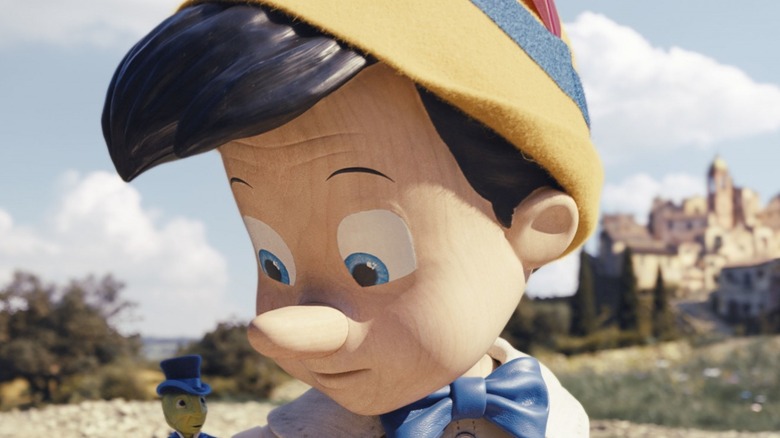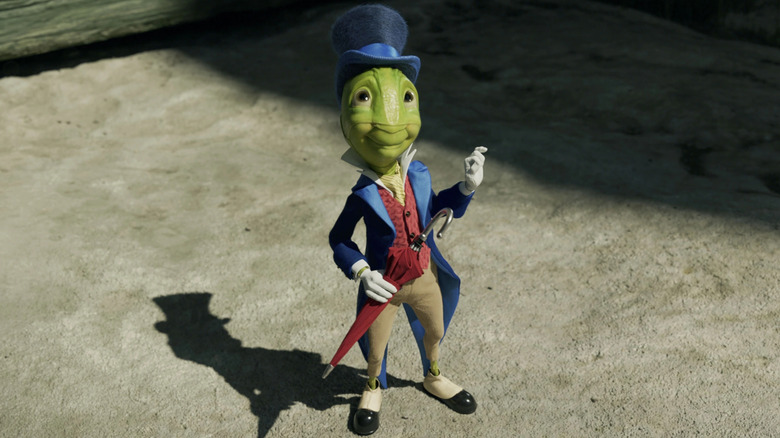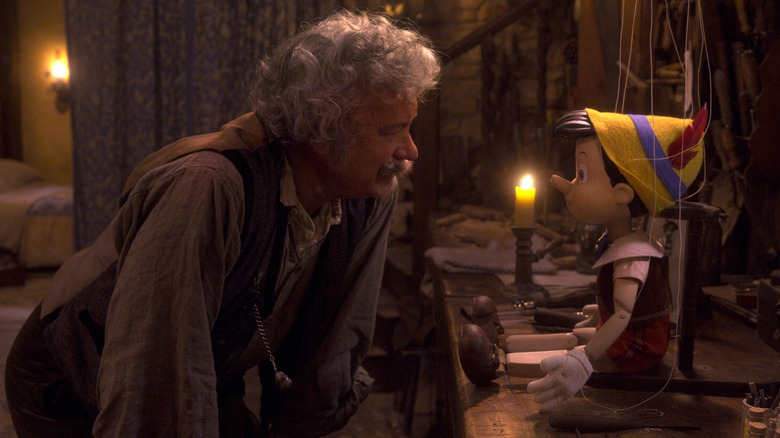Disney Found A Bunch Of Creative Ways To Update Pinocchio
Contains spoilers for "Pinocchio"
Media is rarely timeless — that is to say, the public perception thereof alters with each passing decade. It's funny, though, because the term is exclusively used, it seems, to foster nostalgia for a piece of media that has those very same decades under its belt. That's probably why Disney is fond of the term, we think: to ensure that we as an audience always adore its ever-aging catalog. So it's interesting, then, when the Mouse goes out of its way to modernize adaptations of its older content.
This isn't necessarily a new phenomenon, but it feels as though it has become the standard for otherwise normal characters to drop a series of verbal nods to the present day. Disney's most recent live-action retelling, "Pinocchio," the original animated version of which was released in 1940 (over 80 years ago), does this in a number of ways. Let's take a look at the ones we've spotted so far.
Honest John and Jiminy Cricket know a little too much
For clarity, this isn't intended to be a running list of Easter eggs but rather a spotlight for moments that feel out of place, and most of them come from two weirdly knowledgeable characters. The first is Honest John (Keegan-Michael Key), the not-so-honest anthropomorphic fox who swindles Pinocchio (Benjamin Evan Ainsworth) into joining a traveling circus. He entices the young puppet with the promise of fame and fortune, specifically encouraging him with a potential future as an influencer. Yep. He literally uses the word "influencer," a word that carries an exhausting connotation for those who exist in the age of social media.
What's worse, in the same conversation, Honest John rattles off possible stage names for Pinocchio, all of which are riffs on the fact that he's made of wood. The gag ends when Honest John propositions Pinocchio with the name Chris Pine, to which the fox immediately adds, "No, it'd never work."
Less on the nose, but no less uniquely prescient, is Jiminy Cricket (Joseph Gordon-Levitt), Pinocchio's top hat-wearing conscience and endearing narrator of the film. At various points, he offers advice that feels a touch out of place. He grumbles about paying taxes when the road quality is so lackluster and uses the term "H-E-double-hockey-sticks," a euphemism that certainly didn't exist in 1883 when the novel the film originates from was published.
Further, Jiminy speaks at length about the dangers of peer pressure. This feels less specific to modernity, but there's an argument to be made about the current mob mentality issue and the negative side of social media.
Geppetto learns to accept Pinocchio for who he is
The biggest update Disney made to "Pinocchio" is that Geppetto (Tom Hanks) dies instead of the wooden puppet. When magic and a good, old-fashioned Disney Tear (TM, probably) resurrects him, he informs Pinocchio, in no uncertain terms, that he loves him as he is, pine and all. It's a touching, heartfelt moment that Hanks sells perfectly. Just like Jiminy Cricket's discussion about the dangers of peer pressure, this isn't exclusive to modern times, but it inarguably applies to a modern issue.
In brief, Pinocchio is a character who struggles with his own otherness, and when Geppetto realizes that he perpetuated that issue, he does what he can to correct it. A similar otherness is experienced by members of the LGBTQIA+ community, for whom it is not uncommon to have never received that level of acceptance from their parents. While the situation is not one-to-one, and Disney has a trackable history of financing discrimination (via BBC), it feels safe to say that the comparison will be noticed by the right people.


